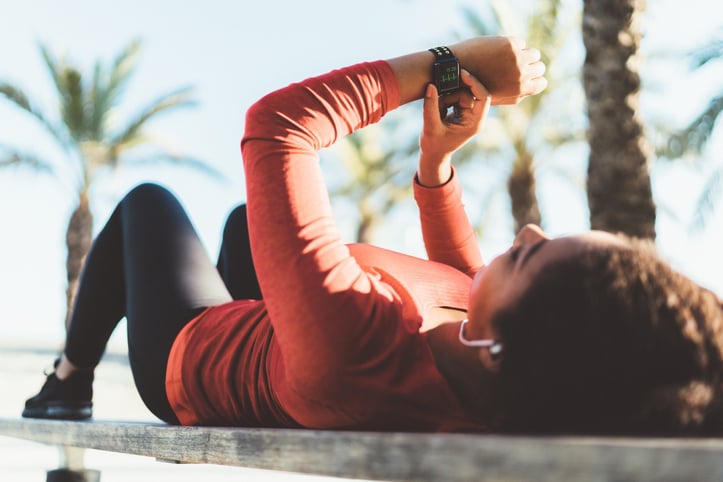Does using self-myofascial release (SMR), static stretching, or a combination of both, improve range of motion (ROM) for overhead athletes? See what the results were for these softball players.
Journal Article:
Fairall, R.R., Cabell, L, Boergers, R.J., & Battaglia, F. (2017). Acute effects of self-myofascial release and stretching in overhead athletes with gird. Journal of Bodywork & Movement Therapies, doi: 10.1016/j.jbmt.2017.04.001
Purpose of the Study:
The purpose of this study was to examine the acute effects of self-myofascial release (SMR), static stretching (SS), and SMR + SS on glenohumeral (GH) internal rotation (IR) range-of-motion (ROM) in overhead athletes exhibiting glenohumeral internal rotation deficit (GIRD).
Study Participants:
12 asymptomatic adult male amateur softball position players participated in the study. No participant had pain either at rest or while playing, had never been diagnosed with any specific shoulder injury, or had shoulder surgery. Position players were chosen because they throw over-hand at all times, which is the biomechanical shoulder movement most associated with GIRD.
Procedure or Methods:
GH IR ROM was measured with participants in a side-lying position on the side of the throwing shoulder with the throwing shoulder and elbow both flexed to 90°. The participants were told to allow gravity to pull them into passive IR. Here, the measurement was taken. Passive was taken as opposed to active to assist in maintaining the scapula in a stabilized position.
SMR was performed by the participants in a side-lying position on the side of the throwing shoulder, with shoulder and elbow flexed to 90° lacrosse ball was positioned in the area of the infraspinatus muscle on the posterior side of the shoulder blade. Participants were instructed to locate the “most tender area” and then were instructed keep constant pressure on that location for 60 seconds. Two sets of 60 second holds were performed with 30 seconds rest between.
Static stretching consisted of performing the sleeper stretch and the cross-body stretch on the throwing shoulder. The sleeper stretch was performed in a side-lying position with shoulder and elbow flexed to 90°. Then, the participants were instructed to let the throwing shoulder to naturally fall into internal rotation to the end ROM where resistance was felt. The non-throwing arm was then used to push the arm down, further increasing the stretch. The stretch was to be held at a point of “mild discomfort” for 3 sets of 30 seconds with 30 seconds rest between.
The cross body stretch was also performed in a side-lying position on the side of the throwing shoulder. The participants were told to wrap the non-throwing arm under the throwing arm just proximal to the elbow and pull the arm into horizontal shoulder adduction, across the body, to the point of “mild discomfort”. This stretch was held for 3 sets of 30 seconds with 30 seconds rest between.
Results:
All three methods produced significant increases in GH IR ROM.
- SMR + SS produced the greatest increase at 10.15°
- SS produced the second greatest at 8.58°
- SMR alone produced the least improvement at 3.84°
Discussion:
The results of this study demonstrate that all three methods significantly improve GH IR ROM in overhead athletes with GIRD. However, SMR + SS improved ROM significantly more than SMR alone. SS alone also improved GH IR ROM significantly. These authors conclude that if an athlete has enough time for warm-up, performing both SMR and SS will give them the greatest improvements in ROM and may provide additional injury prevention benefits. If limited on time, SS alone may also be adequate.
Take away for NASM CPTs:
The results of this study support the use of foam rolling with static stretching as part of an integrated warm-up for overhead athletes who exhibit ROM deficits in the glenohumeral joint. Glenohumeral internal rotation limitations are highly associated with shoulder injuries. The improvements measured in this study were seen immediately, after 1 intervention. Thus, the combination of SMR and SS can have a positive impact within the first session.















